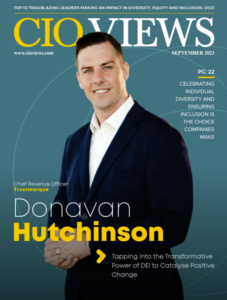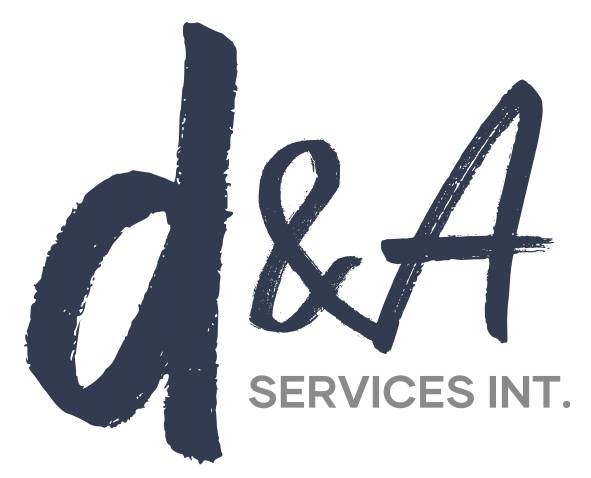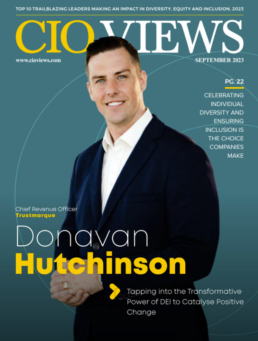Leading The Way Forward With DEI In The Tech Channel
Donavan Hutchinson, Former CRO for Trustmarque drives the focus on DEI at the inaugural Fusion Event. Leaders from Microsoft, HPE Aruba, Cisco, Dell, IBM and Forcepoint all gathered together to discuss the importance of DEI and inclusion in the workplace setting the tone for Trustmarques new EVP Launch
Having recently been recognised as one of the Top 10 Trailblazing Leaders Making an Impact in DEI for 2023 awarded by CIO Views Magazine and presented with the ‘Industry Achievement Award’ for tirelessly championing LGBTQIA+ causes by CRN, Donavan believes that leaders who actively champion DEI initiatives set the tone for organisations he represents, fostering an environment where everyone feels valued and heard.
Furthermore, Donavan is a vocal advocate for equity and accessibility in the workplace, while recognising diversity as a strategic advantage for tech organisations.
He believes that a diverse workforce and an inclusive culture bring a wealth of perspectives, experiences, and ideas that can drive innovation and creativity. These diverse ideas can be an enormous advantage in the technology sector.
Donavan’s commitment to ensuring equal opportunities for all employees is evident in his work, and he believes that creating an inclusive culture starts with removing barriers and biases.
The Art of the Possible: Former Trustmarque, SHI, and PCM Leader Donavan Hutchinson Championing Inclusive Culture to drive growth

The company focuses on providing an enriching environment enabling team members to grow and innovate.
By setting an inclusive tone from the top, celebrating diverse perspectives, and investing in its people’s development, Trustmarque believes it can deliver optimal value to customers powered by creative, motivated teams. As it evaluates growth, sustaining this cultural commitment remains the priority.
Read the link below for more information
The Art Of The Possible: Trustmarque's Journey To Technology Leadership – Humans Of Globe
Donavan Hutchinson- Top 10 Trailblazing Leader Making an Impact in Diversity, Equity and Inclusion
Former Trustmarque CRO Donavan Hutchinson was awarded the accolade as one of the worlds top 10 Trailblazing Leaders for DEI. See the below link for more information
Throughout Donavan's career journey that has already spanned over 20 years in the technology industry, where he has had the privilege of working for various Technology VARs (Value-Added Resellers), Donavan consistently focuses on driving equity for all and creating a culture of inclusion and diversity in every organisation that he is part of.
One of the driving forces behind his commitment to diversity and inclusion was his upbringing and the strong support system of his family and friends. “They have inspired me to be the best version of myself and have instilled in me the value of uplifting others. I firmly believe that a workforce where individuals could be their most authentic selves would lead to a happier and more productive environment, ultimately driving business success,” Donavan maintains.
During his professional journey, Donavan encountered several roadblocks that not only provided valuable lessons but were also influenced by his identity as a proud gay leader. One significant roadblock that he faced was the prejudice and discrimination he encountered in certain professional settings due to his sexual orientation. These experiences and unique challenges taught him the importance of resilience, authenticity, and the power of representation, and further fuelled his vision to inspire individuals from marginalized communities to be the best version of themselves.
Navigating these roadblocks reinforced Donavan’s belief in the necessity of diversity, inclusion, and equal opportunities, and motivated him to create a work environment that not only embraces and celebrates individual differences but also actively supports and empowers those from marginalised communities.
Becoming a Catalyst for Positive Change and Growth
Donavan strives to be a ‘catalyst’ for positive change and growth, both within the organization and the broader industry. By driving revenue growth, fostering inclusive cultures, and championing diversity, he aims to ignite transformation and inspire others to reach their full potential.
He points out that education and awareness play a crucial role in creating a more inclusive and equitable society, and one way in which he aspires to contribute is by providing educational resources, actively engaging in speaking engagements and events focused on DEI and engaging with educational institutions to promote DEI. By sharing his insights, experiences, and knowledge with his 10,000 plus followers on LinkedIn, Donavan hopes to influence industry conversations and encourage organisations to prioritise DEI as a strategic imperative.
“I am vocal in this space and it’s for good reason: through thought leadership articles, blog posts, or social media content, I strive to raise awareness, challenge biases, and promote best practices in DEI. Recently, I joined Microsoft UK for a special Pride Power Hour where I represented the Microsoft Partner ecosystem in a panel discussion tackling key topics in the community,” he shares.

Donavan Hutchinson, Trustmarque York Pride
Donavan Hutchinson, Trustmarque Group Chief Revenue Officer and Diversity Equality and Inclusion Lead announces that the Trustmarque Group is sponsoring the annual York Pride parade and festival,
This year, we are embracing the York LGBTQIA+ community and Trustmarque employees will be walking the parade route with family and friends. As an organisation headquartered in York, and founded in 1987, this is a historic milestone in our 40-year history.
Original Article: https://www.trustmarque.com/news/trustmarque-sponsors-york-pride-2023/
CRN WIC Awards Judges 2023
Donavan Hutchinson joins the select judging panel for the 2023 CRN Women in Channel Awards
Donavan Hutchinson is Chief Revenue Officer at Trustmarque and Governor at Barnsley College with over 20 years in the technology industry and has a wealth of experience in overall sales strategy, compliance, mergers and acquisitions and international collaboration programs having worked as a business leader for some of the world largest technology reseller organisations with a key focus on Diversity, Equality and Inclusion. His commitment to driving change across various industries in promoting equality for all has been instrumental in the growth of several organisations he has had the opportunity to lead during his tenure.
A CRN Diversity A lister, CRN Channel A Lister, CRN Executive Mentor of the Year finalist 2022 and CRN Mental Health Champion of the Year finalist 2022 , Donavans focus on equality focuses on all demographics as he continues to drive education and awareness programs across the community socially but also through consultative engagements. A member of the LGBTQIA++ community and Pride Life Global Advocate Donavan utilises his own experience in helping to educate others to be the best version of themselves , speaking at several events on the topic of DEI and driving change through education and awareness.

Full article here: https://event.channelweb.co.uk/crnwomendiversityinchannelawards2023/en/page/judges
How can you avoid pink washing?
June is celebrated as Pride Month, and during this time, companies are quick to jump on the bandwagon to show their support for the LGBTQ+ community. From rainbow-themed products to corporate-sponsored pride parades, businesses are eager to capitalise on the cultural significance of Pride Month. However, this practice, commonly known as pinkwashing, has come under scrutiny in recent years for its exploitation of the LGBTQ+ community.
According to Stephan Dahl, an author from the University of Hull, pinkwashing in the United States is centred around pride merchandise created and sold by companies that do nothing for queer people. This feeds a "big business small community" relationship, and it seems beneficial when, in reality, there is nothing changing legally for queer people through this practice. Essentially, pinkwashing is a marketing strategy that involves using Pride Month as a way to promote products and services, without actually contributing to the LGBTQ+ community in any meaningful way.
One of the most significant criticisms of pinkwashing is the way it feeds into capitalism and the exploitation of marginalised communities. Pride has become an increasingly commercialised event, with businesses of all sizes seeing it as an opportunity to make a profit. This has led to a situation where corporations benefit financially from the LGBTQ+ community's struggles, without doing anything to address those struggles.
Another criticism of pinkwashing is the way it can undermine the true meaning of Pride. For many in the LGBTQ+ community, Pride is a time to celebrate the progress that has been made and to advocate for further change. However, when businesses co-opt the event to promote their products, it can take away from the message of the movement and make it seem like a marketing opportunity.
The danger of pinkwashing is that it can give consumers a false sense of security, making them think that they are supporting the LGBTQ+ community when, in reality, they are only supporting a business. This practice also makes it difficult for smaller businesses that genuinely support the LGBTQ+ community to compete with larger corporations that can afford to spend more on marketing.
So, what can we do to combat pinkwashing? As consumers, we can choose to support businesses that are genuinely committed to supporting the LGBTQ+ community. This may involve doing some research to find out which companies are actually making contributions to queer causes. It's also important to be critical of businesses that use Pride Month as a marketing opportunity, and to hold them accountable for their actions.
In conclusion, while pinkwashing may seem like a harmless marketing strategy, it can have significant consequences for the LGBTQ+ community. By choosing to support businesses that are genuinely committed to the cause and holding corporations accountable, we can work towards a more equitable and inclusive society. Let's celebrate Pride Month for what it truly represents: progress, acceptance, and love for all.
Does your organisation have a correct DEI strategy in place?
Diversity, equity, and inclusion (DEI) have become increasingly important topics in today's workplace. Companies with strong DEI policies are more likely to attract top talent, retain employees, and create a culture of innovation and creativity. However, it's not enough to simply have a policy in place.
To truly create an inclusive workplace, it's important to regularly review and update your inclusivity policy. Here are the top 10 ways to do so:
- Gather feedback from employees: The first step in reviewing your inclusivity policy is to gather feedback from your employees. This can be done through surveys, focus groups, or one-on-one meetings. Ask employees about their experiences and if they feel the company is inclusive.
- Analyse your data: Analysing data on employee demographics, hiring practices, promotions, and turnover can help you identify areas where improvements need to be made.
- Review job descriptions and requirements: Reviewing job descriptions and requirements can help you identify any unintentional barriers that may be preventing certain groups from applying or advancing within the company.
- Assess your company culture: Take a critical look at your company culture and identify any behaviours or practices that may be exclusionary or biased.
- Evaluate your benefits and policies: Review your benefits and policies to ensure they are inclusive and equitable. For example, do you offer paid parental leave for all parents, regardless of gender?
- Audit your hiring process: Review your hiring process to ensure that it is fair and unbiased. This can include using blind resume reviews or implementing diverse hiring panels.
- Provide diversity and inclusion training: Offering diversity and inclusion training to all employees can help create a shared understanding of the importance of inclusivity and provide practical tools for creating an inclusive workplace.
- Identify and address micro-aggressions: Micro-aggressions are subtle, often unintentional forms of discrimination that can have a significant impact on employees. Identify and address micro-aggressions in your workplace.
- Encourage diverse perspectives: Encourage diverse perspectives by creating opportunities for all employees to contribute and share their ideas. This can include brainstorming sessions or diverse project teams.
- Hold leaders accountable: Hold leaders accountable for creating an inclusive workplace. This can include setting specific goals for diversity and inclusion and regularly reviewing progress.
In conclusion, creating an inclusive workplace is an ongoing process that requires regular review and updates to your inclusivity policy. By taking these steps, you can ensure that your company is not only attracting top talent but also creating a culture that values and celebrates diversity, equity, and inclusion.
How can your organisation bridge the gender gap
The gender gap is a complex issue that has plagued organisations for decades. Despite progress made in recent years, women still face significant barriers to career advancement and equal pay in the workplace. Organisations must take proactive steps to address the gender gap to promote equality and create a more diverse and inclusive workforce.
Here are some strategies organisations can use to bridge the gender gap:
- Addressing unconscious bias: Unconscious bias is a significant contributor to the gender gap. Organisations can address this issue by providing training and resources to help employees identify and overcome their biases. By creating awareness about unconscious bias, organisations can help their employees make more objective decisions and create a more inclusive workplace.
- Creating flexible work arrangements: Many women drop out of the workforce due to family obligations. Providing flexible work arrangements, such as remote work options, part-time work, or job sharing, can help retain talented women and promote a healthy work-life balance.
- Providing mentoring and networking opportunities: Women often face challenges in networking and mentoring. Providing opportunities for mentorship and networking can help women build relationships, gain support, and advance their careers.
- Offering equal pay: Pay equity is an essential component of bridging the gender gap. Organisations must evaluate their pay structures to ensure that women are paid equally for the same work as their male counterparts.
- Implementing family-friendly policies: Family-friendly policies, such as parental leave, child care assistance, and support for breastfeeding, can help women balance work and family responsibilities.
- Creating gender-inclusive policies: Organisations must review their policies and practices to ensure that they are gender-inclusive. This includes policies related to recruitment, hiring, promotion, and career development.
- Providing diversity and inclusion training: Organisations can provide training to their employees to create awareness about the benefits of diversity and inclusion. This can help promote a more inclusive workplace culture and reduce the gender gap.
- Encouraging women to pursue leadership roles: Organisations can encourage women to pursue leadership roles by providing opportunities for professional development, mentoring, and networking. This can help build a pipeline of female leaders and reduce the gender gap at the top.
- Measuring progress: Organisations must measure their progress in addressing the gender gap. This includes collecting data on gender diversity, pay equity, and retention rates. This data can be used to identify areas for improvement and track progress over time.
- Creating a culture of inclusivity: Finally, organisations must create a culture of inclusivity. This means fostering a workplace culture that values diversity, promotes equality, and encourages open communication. When employees feel included and valued, they are more likely to stay with the organisation and contribute to its success.
In conclusion, bridging the gender gap is a complex issue that requires a multifaceted approach. Organisations must address unconscious bias, provide flexible work arrangements, offer equal pay, and create a culture of inclusivity. By implementing these strategies, organisations can promote equality, retain talented employees, and create a more diverse and inclusive workforce.








